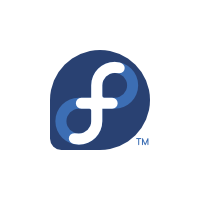The Fedora 20 “Heisenbug†alpha release has arrived with a preview of the latest fantastic, free, and open source technology currently under development. Let’s take a peek inside!
http://fedoraproject.org/get-prerelease
What is the Alpha Release?
The Alpha release contains all the exciting features of Fedora 20 in a form that anyone can help test. This testing, guided by the Fedora QA team, helps us target and identify bugs. When these bugs are fixed, we make a Beta release available. A Beta release is code-complete and bears a very strong resemblance to the third and final release. The final release of Fedora 20 is expected in early December.
We need your help to make Fedora 20 the best release yet, so please take some time to download and try out the Alpha and make sure the things that are important to you are working. If you find a bug, please report it – every bug you uncover is a chance to improve the experience for millions of Fedora users worldwide. Together, we can make Fedora a rock-solid distribution. We have a culture of coordinating new features and pushing fixes upstream as much as feasible and your feedback will help improve not only Fedora but Linux and free software on the whole.
10 Years of Fedora
The Fedora 20 release coincides nicely with the 10th anniversary of Fedora. The first Fedora release (then called Fedora Core 1) came out on November 6, 2003.
Since then, the Fedora Project has become an active and vibrant community that produces nearly a dozen “spins” that are tailor made for desktop users, hardware design, gaming, musicians, artists, and early classroom environments.
ARM as a Primary Architecture
While Fedora has supported a number of hardware architectures over the years, x86/x86_64 has been the default for the majority of Fedora users and for the Linux community in general.
ARM, however, has been making massive strides. It already dominates the mobile market, and is becoming a go-to platform for hobbyists and makers, and is showing enormous promise for the server market as well.
In keeping with Fedora’s commitment to innovation, the Fedora community has been pushing to make ARM a primary architecture to satisfy the needs of users and developers targeting the ARM platform.
Maturity and Advanced Features
Sometimes it’s not the big new features that make a users’ experience better, it’s the little enhancements or long-awaited tricky features that really help make a new release the bee’s knees.
NetworkManager Improvements
NetworkManager is getting several improvements in Fedora 20 that will be welcome additions for power users and system administrators.
Users will now be able to add, edit, delete, activate, and de-activate network connections via the nmcli command line tool, which will make life much easier for non-desktop uses of Fedora.
NetworkManager is also getting support for bonding interfaces and bridging interfaces. Bonding and bridging are used in many enterprise setups and are necessary for virtualization and fail-over scenarios.
No Default Sendmail, Syslog
Fedora 20 removes some services that many users find unnecessary, though (of course) they will remain available as installable packages for users who might need them.
The systemd journal now takes the place as the default logging solution, having been tested and able to manage persistent logging in place of syslog.
Also, Sendmail will no longer be installed by default, as most Fedora installs have no need of a Mail Transfer Agent (MTA).
Cloud and Virtualization Improvements
The Fedora 20 release continues the Fedora tradition of adopting and integrating leading edge technologies used in cloud computing. This release includes a number of features that will make working with virtualization and cloud computing much easier.
OS Installer Support for LVM Thin Provisioning
LVM has introduced thin provisioning technology, which provides greatly improved snapshot functionality in addition to thin provisioning capability. This change will make it possible to configure thin provisioning during OS installation.
VM Snapshot UI with virt-manager
This change will make taking VM snapshots much easier. qemu and libvirt have all the major pieces in place for performing safe VM snapshots/checkpoints, however there isn’t any simple discoverable UI. This feature will track adding that UI to virt-manager, and any other virt stack bits that need to be fixed/improved. This includes adding functionality to libvirt to support deleting and rebasing to external snapshots.
Role based access control with libvirt
Libvirt role based access control will allow fine grained access control like ‘user FOO can only start/stop/pause vm BAR’, but for all libvirt APIs and objects.
ARM on x86 with libvirt/virt-manager
This change will fix running ARM VMs on x86 hosts using standard libvirt tools libvirt virsh, virt-manager and virt-install.
Developer Goodness
As always, Fedora 20 will include several new features and updated packages that will be of interest to all manner of developers.
Ruby on Rails 4.0
This update will keep Fedora up-to-date and will ensure that the current Ruby on Rails developers stay with us as they will get support for system-packaged Ruby on Rails of the latest version. Apart from that, Rails 4.0 also bring improved functionality, speed. security and better modularization.
Perl 5.18
Perl 5.18 will be shipped in Fedora 20. Perl doesn’t get as much attention these days, but it’s still a vital part of many production and development environments. Fedora will deliver the most up-to-date Perl release so its users will be able to stay current with the latest Perl.
Even More Changes
Fedora prides itself on bringing cutting-edge technologies to users of open source software around the world, and this release continues that tradition. No matter what you do, Fedora 20 has the tools you need to help you get things done.
A complete list with details of the accepted changes is available here:
https://fedoraproject.org/wiki/Releases/20/ChangeSet
Desktop Environments and Spins
GNOME 3.10
Fedora 20 Alpha will have a preview of GNOME 3.10, GNOME 3.9.90. GNOME 3.10 will have a number of new applications and new features that will please GNOME-lovers in the Fedora 20 release. This release includes a new music application (gnome-music), a new maps application (gnome-maps), a revamp for the system status menu, and Zimbra support in Evolution.
There is also preliminary support in this release for running GNOME-shell as a Wayland compositor, though Wayland may not be in the default packages for the final Fedora 20 release.
KDE Plasma Workspaces 4.11
The Fedora KDE SIG has rebased to KDE 4.11 for Fedora 20. This release includes faster Nepomuk indexing, improvements to Kontact, KScreen integration in KWin, Metalink/HTTP support for KGet, and much more.
Spins
Spins are alternate versions of Fedora. In addition to various desktop environments for Fedora, spins are also available as tailored environments for various types of users via hand-picked application sets or customizations.
To see all of the Official Fedora 20 Release Spins, see the Fedora 20 Release Spins link.
Nightly composes of alternate Spins are available here: http://dl.fedoraproject.org/pub/alt/nightly-composes
Note on performance
Fedora development releases use a kernel with extra debug information to help us understand and resolve issues faster; however, this can have a significant impact on performance. Refer to the kernel debug strategy for more details. You can boot with slub_debug=- or use the kernel from nodebug repository to disable the extra debug info.
Issues and Details
Heisenbug Alpha is a testing release. To report issues encountered during testing, contact the Fedora QA team via the test mailing list or in #fedora-qa on freenode.
As testing progresses, common issues are tracked at https://fedoraproject.org/wiki/Common_F20_bugs.
For tips on reporting a bug effectively, read http://fedoraproject.org/wiki/How_to_file_a_bug_report.
Contributing
There are many ways to contribute beyond bug reporting. You can help translate software and content, test and give feedback on software updates, write and edit documentation, design and do artwork, help with all sorts of promotional activities, and package free software for use by millions of Fedora users worldwide. To get started, visit http://join.fedoraproject.org today!





